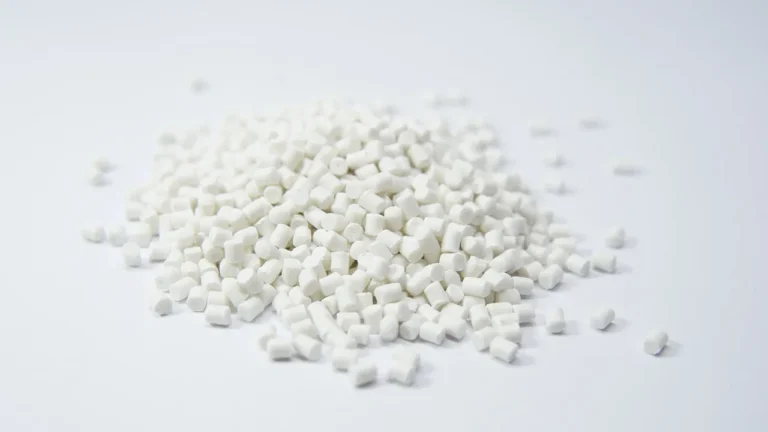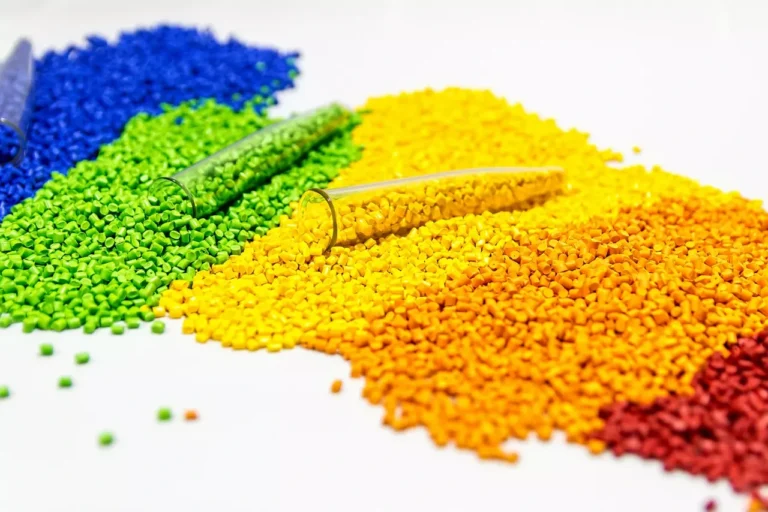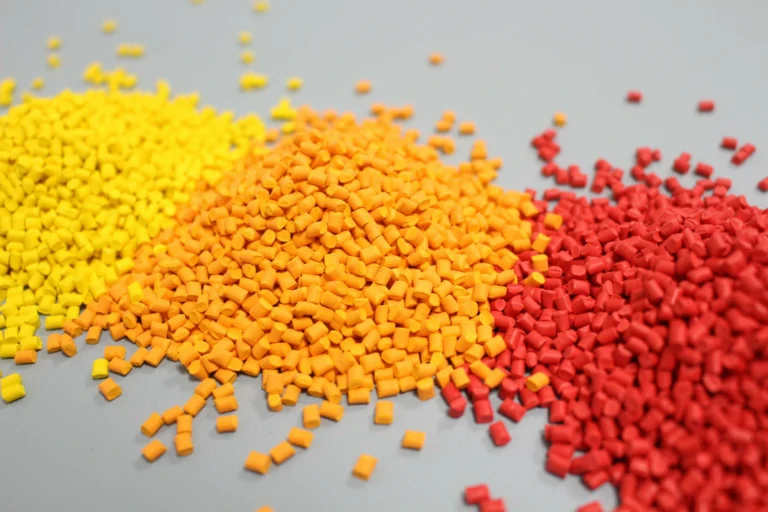Masterbatch, also known as color masterbatch, is a new type of polymer-based colorant developed to address the drawbacks of powder pigments and dyes in plastic processing, such as poor dispersion, inconvenient metering, and environmental pollution. It consists of a high proportion of pigments or dyes and additives uniformly dispersed and encapsulated in a carrier resin, which is then processed through heating, melting, mixing, extrusion, and pelletization to form a granular color concentrate.
It is widely used in the coloring of various plastic products (such as packaging materials, daily necessities, appliance housings, automotive components, pipes and profiles, toys) and synthetic fiber spinning (such as polyester and polypropylene), serving as the core material for achieving efficient, stable, and clean coloring in the plastic and synthetic fiber industries.
Types of masterbatch
Masterbatch can be classified based on various dimensions, including carrier, function, dispersion form, color concentration, special effects, and application. Below are several common categories:
Classification by carrier
- General-purpose plastic masterbatch: The carrier is PE, PP, PS, etc., commonly used in daily necessities, packaging materials, and other conventional plastic products.
- Engineering plastic masterbatch: The carrier is ABS, PC, PA, PBT, etc., which are heat-resistant and have strong mechanical properties, commonly used in electronics and automotive components.
- Special resin masterbatch: Such as PVC masterbatch, PET masterbatch.
Classification by function
- Ordinary coloring masterbatch: Only achieves basic colors without special functions.
Functional modified masterbatch:
- Anti-static masterbatch: Contains conductive agents to eliminate static electricity, such as in electronic packaging.
- Flame-retardant masterbatch: Contains flame retardants to enhance the fire resistance rating of materials, such as in appliance housings.
- Anti-aging masterbatch: Contains UV absorbers/antioxidants to extend the lifespan of outdoor products, such as building materials.
- Brightening/whitening masterbatch: Contains fluorescent whitening agents to enhance surface gloss or whiteness, such as in high-end packaging.
Classified by application
- Injection molding color masterbatch: High flowability, fast mold filling, such as appliance housings and daily necessities.
- Blown film color masterbatch: Low migration, high dispersion, ensuring film transparency, such as food packaging film.
- Fiber color masterbatch: High-temperature spinning resistance, no fiber breakage, such as synthetic fibers and non-woven fabrics.
- Extrusion color masterbatch: Strong weather resistance, suitable for sheets and pipes.
How to make masterbatch?
Masterbatch Production Core Process
Pre-treatment:
Ultrafine pigment milling (particle size ≤1μm)
Carrier resin drying (moisture content <0.02%)
High-Speed Mixing:
Proportioning: Carrier resin (40-80%) + Pigment (10-40%) + Dispersant (5-20%)
Equipment: Kneader at <80℃
Melt Extrusion:
Twin-screw extruder with zonal temperature control:
Feeding zone: 160℃ → Mixing zone: 220℃
High-shear screw for pigment dispersion
Vacuum devolatilization (volatile removal)
Pelletizing & Screening:
Pelletizing: Underwater cutting (for PA) / Air-cooled cutting (for PE/PP)
Vibrating screen: Removal of oversized (>2mm) and undersized (<0.5mm) pellets
Quality Control (QC):
Dispersion test: Pigment agglomerates ≤5μm (microscopy)
Thermal stability: Color difference ΔE <1.0 after 5 extrusion cycles
Critical Controls:
Dust explosion prevention: N₂ inerting system
VOC treatment: Regenerative Thermal Oxidizer (RTO) incineration
How is masterbatch added to plastic?
Masterbatch is added to plastic through the following process: precise measurement -> physical mixing -> addition to the processing equipment hopper -> melting with the plastic carrier inside the equipment -> uniform dispersion through the shear mixing action of the screw -> final molding. The core of this process lies in precise proportion control and efficient melting dispersion, ultimately ensuring the uniformity and stability of the color or functionality of plastic products. Below are the key points of each step:
Proportional weighing: Based on the required color depth or functional intensity, precisely weigh a certain proportion of masterbatch and base plastic particles (natural-colored plastic).
Physical mixing: Pour the weighed color masterbatch and base plastic particles into the mixer and thoroughly stir to mix, ensuring the color masterbatch is uniformly coated on the surface of the base plastic particles.
Feed into the machine: Feed the mixed material into the hopper of the plastic processing equipment (such as an injection molding machine or extruder).
Heating, melting, and mixing:
The material is heated and melted inside the machine.
The rotation of the machine screw generates strong shear force, thoroughly dispersing the pigments or functional components in the masterbatch and uniformly distributing them throughout the melted base plastic.
Molding: The uniformly mixed melted plastic is extruded or injected into a mold, cooled, and formed into the final colored or functional plastic product.
Masterbatch application
As an efficient and environmentally friendly plastic colorant, masterbatch is widely used across numerous industries. Below are the six most common industries and their typical applications:
Plastic products industry: daily-use plastic products (buckets, basins, coat hangers), home goods, plastic furniture, etc.
Packaging industry: food packaging film, bottle caps, beverage bottles, plastic bags, cosmetic containers, etc.
Construction and building materials industry: applications include PVC window and door profiles, pipes (water pipes, electrical conduits), ceiling panels, waterproofing membranes, etc.
Automotive Manufacturing: Bumper, interior panels, instrument panels, door handles, seals, and other components.
Home Appliances and Electronics: Refrigerator shells, washing machine panels, air conditioner grilles, rice cookers, electronic product shells, etc.
Agricultural Sector: Agricultural films, irrigation pipes, seedling trays, livestock farming equipment, etc.
Conclusion
Through the above article, we have learned what color masterbatch is, as well as its manufacturing process and application scope. Are you currently seeking high-quality masterbatch solutions to meet your plastic production needs? Contact us now. Whether for injection molding, film blowing, extrusion, or spinning applications, we can provide products precisely matched to your process characteristics. We will offer you efficient, stable, and environmentally friendly coloring solutions along with timely and reliable supply services.






